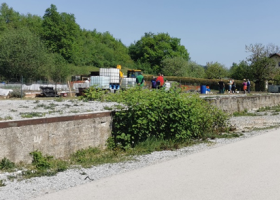- 3.3Impact Factor
- 7.7CiteScore
- 20 daysTime to First Decision
New Frontiers in Design and Planning for Healthy Built Environments
This special issue belongs to the section “Environmental Sustainability and Applications“.
Special Issue Information
Dear Colleagues,
Public health issues are closely related to the design and planning of the built environment. Over the last year, the contagious disease COVID-19 has affected the entire world and challenged some established practices in architectural and urban planning and design. New health-related determinants of space have been imposed, and the perception and significance of healthy places in the built environment has changed. COVID-19 has opened numerous new questions for the built environment, from the definition of human scale to the application of technologies to achieve socio-spatial justice and reconceptualize and reorganize the built space at micro and macro scales, among others. Altered circumstances not only affect people’s lives, their habits, and environments but also require a reconsideration of various aspects, including tools and intended outcomes of the processes of (re)forming these environments.
Operationalization of the healthy built environment is a complex process underpinned by a need to master past lessons, critically consider responses to current crisis, and envision coming trends and risks, all for the purpose of coping with future challenges successfully. Thus, the aim of this Special Issue is to formulate relevant research questions and provide adequate responses that reveal the characteristics of the built environment in circumstances characterized by the presence of massively infectious human diseases. Authors are encouraged to propose and apply novel multi-, inter-, and transdisciplinary approaches in exploring various scales and elements of the built environment, from different types of buildings and closed spaces to segments of urban form and functions, i.e., (green) open spaces, urban density, transport, mobility, etc., to social environments and practices (e.g., social distancing) embedded into these layers of the built environment. The editors welcome manuscripts prepared either as comprehensive reviews or original research articles.
Prof. Dr. Alenka Fikfak
Dr. Saja Kosanović
Dr. Matej Nikšič
Dr. Christine Mady
Guest Editors
Manuscript Submission Information
Manuscripts should be submitted online at www.mdpi.com by registering and logging in to this website. Once you are registered, click here to go to the submission form. Manuscripts can be submitted until the deadline. All submissions that pass pre-check are peer-reviewed. Accepted papers will be published continuously in the journal (as soon as accepted) and will be listed together on the special issue website. Research articles, review articles as well as short communications are invited. For planned papers, a title and short abstract (about 250 words) can be sent to the Editorial Office for assessment.
Submitted manuscripts should not have been published previously, nor be under consideration for publication elsewhere (except conference proceedings papers). All manuscripts are thoroughly refereed through a single-blind peer-review process. A guide for authors and other relevant information for submission of manuscripts is available on the Instructions for Authors page. Sustainability is an international peer-reviewed open access semimonthly journal published by MDPI.
Please visit the Instructions for Authors page before submitting a manuscript. The Article Processing Charge (APC) for publication in this open access journal is 2400 CHF (Swiss Francs). Submitted papers should be well formatted and use good English. Authors may use MDPI's English editing service prior to publication or during author revisions.
Keywords
- architectural and urban design and planning
- vulnerability to health crises
- transformability, adaptation and resilience
- determinants of health
- physical, social, and mental health
- new spatial concepts for healthy built environment

Benefits of Publishing in a Special Issue
- Ease of navigation: Grouping papers by topic helps scholars navigate broad scope journals more efficiently.
- Greater discoverability: Special Issues support the reach and impact of scientific research. Articles in Special Issues are more discoverable and cited more frequently.
- Expansion of research network: Special Issues facilitate connections among authors, fostering scientific collaborations.
- External promotion: Articles in Special Issues are often promoted through the journal's social media, increasing their visibility.
- e-Book format: Special Issues with more than 10 articles can be published as dedicated e-books, ensuring wide and rapid dissemination.

